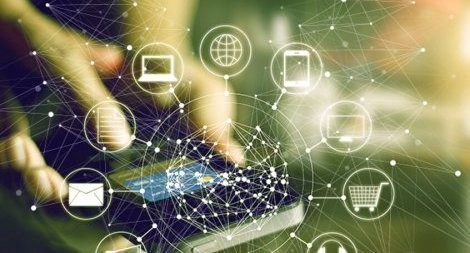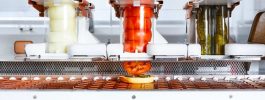It is no surprise that new machine learning technologies and the power to analyze large amounts of data have created unique opportunities in the e-commerce industry. Thanks to data-driven enhancements for ads, upselling, and cross-selling, online shoppers are able to get “what they want, when they want”.
Such transformation had a direct impact on business efficiency, driving more sales and improving customer satisfaction. But it also widened the gap between physical and online businesses.
However, using the Internet of Things (IoT) can help narrow this gap and overcome other challenges. Thanks to mobile applications, microprocessors, and ubiquitous connectivity on the Internet, smart devices can be deployed everywhere, on everything from point-of-sale systems to stock control, distribution and even apparel. New technologies allow retailers to collect and analyze data, so they can interact with each customer in an original and personalized way, like never before. Although the market currently offers many products and services to this end, few are actually being applied in practice.
In this article, I want to address just a few benefits of the Internet of Things for efficiency in retail operation.
1. Supply chain management and inventory
Inventory management problems represent some of the biggest expenses and losses in retail stores. According to a McKinsey report, overstock, stock-outs and shrinkage generate an annual cost of US$ 1.1 trillion for retailers around the world. In the US alone, shrinkage annually causes a loss of US$ 42 billion, equivalent to 1.5% of total retail sales.
With IoT technologies, retailers may not only improve inventory control within the store, but also expand it into the supply chain. Tracking of goods no longer begins at the receiving dock but at the point of manufacture.
2. Improvement in the supply chain
With RFID tags placed on the products, for example, and with the data integrated into the sensors in the transport vehicles, it is possible to track the purchased products and their conditions throughout the supply chain. Information collected from devices can be analyzed and rules-based notifications and alerts can be sent to mobile applications, for example, informing employees or team members that an action is required.
Improvement in this control allows suppliers to reduce product damage all the way to points of sale, distribution or delivery. This is especially useful in transporting perishable and temperature sensitive stock, for example.
3. Improving in-store inventory tracking
Another major problem faced in retailing is the difficulty of conducting accurate inventory tracking. With this, store shelves are not restocked in time; items are moved from shelves; customers and employees are unable to locate items they are looking for. The results are higher inventory costs, loss in employee productivity, potentially empty shelves, and lost sales opportunities.
IoT technologies can help address these issues by giving more visibility to the placement of inventory items and improving controls. By deploying an inventory management system based on RFID chips, sensors and beacons, for example, physical resources can be synchronized directly with your back office systems. Additional technologies such as store shelf sensors, digital price tags, smart monitors, and high-resolution cameras combined with imaging analysis features can help improve retailer control of goods located on shelves and in back storage.
4. Reducing shrinkage and fraud
Shrinkage and fraud are other challenges that are always present in retail, whether by customers or employees. IoT can help contain theft of items by adding a layer of visibility and traceability to inventory items. Whether with RFIDs and camera feeds combined machine learning can allow a clearer view of what happens in the store, and detect suspicious movements, for example.
5. Optimization in the distribution and replacement of products in the store
Understanding how customers “navigate” the store’s aisles, shelves, and islands is valuable information. Prior to IoT technologies, this was done through human observation, assumptions, random experimentation and manual sales correlation.
Today, through data collected from chips, motion detection sensors, beacons or video analysis for example, it is possible to collect more accurate data from customer movement patterns and identify areas of “premium” traffic. Changes to store layouts can be automatically correlated with changes in customer behavior and sales numbers in order to perform more accurate A/B tests, which was only possible in online retail.
6. In-store employee optimization
Being assertive in identifying the needs of each customer at the right time is an important factor in closing sales. This can improve conversion rates. The problem is that in many cases, in addition to the lack of employees to assist so many customers at the same time, the presence of a salesperson can be misinterpreted and considered offensive by customers.
IoT can help you address this problem. Motion detection sensors, cameras, and facial expression recognition algorithms can help identify customers who have been standing for a long time in one location, indicating they may have some kind of doubt. The IoT ecosystem can then notify a sales employee who is closest to you through an application or smartwatch, for example.
These are just a few examples of the adoption of IoT solutions to maximize retail operational efficiency. I will detail in others articles examples of solutions to the challenges addressed here.
Links:
Article on Medium
How iot can leverage small and midsize business




